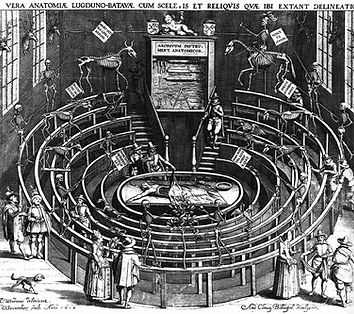
American Veterinary Medical History Society
TIME-BITES
AVMHS Time-Bites are historical “mini-stories” about specific aspects of veterinary medicine and animal health from ancient times through the ages. They highlight how veterinary medicine has changed over time and, in many instances, provide examples of how human and veterinary medicine have interrelated in the past.
We invite you to feed your intellectual appetite for history, read the words of other veterinary-history enthusiasts, and stand in solidarity with the remarkable scientific and societal contributions of past generations.
The History of Time-Bites
The AVMHS began this project in 2006 to educate and inform veterinarians, students, scientists, public servants, academics, and all animal health professionals about their rich heritage.
Since 2009, Time-Bites have been published on the Veterinary Information Network (VIN)® (vin.com), an online membership community for veterinarians and veterinary students. In most cases, VIN has added some current resources (eg, recent journal articles) related to the Time-Bite content. If you are a member of VIN, look for Time-Bites under the “VIN Library” tab, and then select “Miscellaneous” and “AVM History Society Time-Bites” from the drop-down menus.
Time-Bites that have also appeared in issues of Veterinary Heritage, the Society's semi-annual bulletin, are now posted below for all members to access and enjoy.

MORE INFORMATION & SUBMISSIONS
Susan E. Aiello, DVM, ELS
Time-Bites Editor
937-499-0100
AVMHS Time-Bites Published on VIN (as of 2025-January-8)
TIME-BITES APPEARING IN VETERINARY HERITAGE
United States and Canada, Pre-1930s
What to call a veterinary degree: VS. DVS, MDV, DVM, MDC...?
Summary: Talks about the campaign to establish a uniform veterinary degrees before D.V.M. became the standard; include diplomas and biographical information on Dr. Henry Oscar Kelpe.
California, U.S.A., ca. 1947
Lip tattoos to identify racehorses
Summary: Points out how a military veterinarian’s technique came to become standard practice for identifying race horses.
Omaha, Nebraska, U.S.A.,1891
Cannabis for equine colic use by late 19th Century practitioners
Summary: Talks about Dr. Sesco Stewart’s experience in recommending the use of cannabis for equine colic patients.
New York, New York, U.S.A., 1868
Coping with summer heat in the city
Summary: Covers the need for humane treatment of urban working horses through Dr. John Busteed’s advice for treating heat stroke.
Boston, Massachusetts, U.S.A., 1875
Suturing with horsehair
Summary: Provides description of the “discovery” of horsehair for suturing by human surgeons in the late 19th century and its use out of necessity during the American Civil War when silk and other materials were unavailable.
U.S.A., 1850-1920
Carriage houses and horse stables
Summary: Gives examples and ways to identify carriage houses that were once common behind Victorian houses before automobiles.
Europe, 1883 and New York, New York, U.S.A., 1895
Horses as heroes in the fight against diphtheria
Summary: Describes how the serum of horses was used to combat diphtheria and provides an example of serum production in New York City.